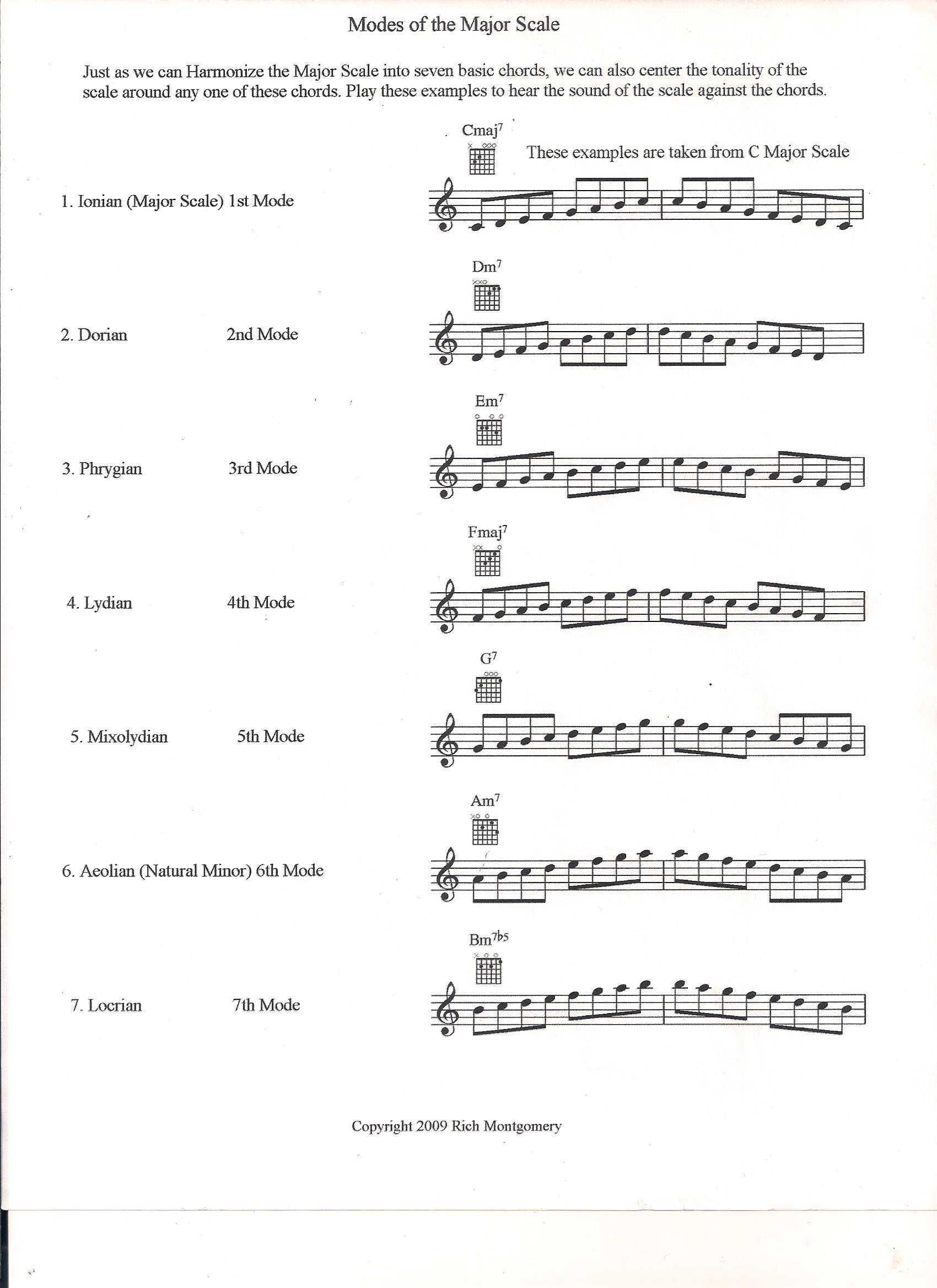Elements of Composition - Modes...A Rainbow Full of Sound
Hi guys,
If you've just found this series on elements of composition, you can get caught up here:
The Major Scale
The Natural Minor Scale
Harmonized Major Scale
Chord Construction
Modes of the Major Scale
What are Modes?
Modes are the result of assigning any note of the scale as the Tonic of the scale. Just as we were able to find Natural Minor hanging out in the sixth degree of our scale, we can build our scale from any of it's notes. The result is a shift in our whole-step half-step sequence. And since we now know that we can derive chords from any of the scale's notes, we can also center the tonality of the scale around any of these chords.
For example, we might want to build a melody around our ii chord instead of our I chord.
Modal Names and Formulas
I = Ionian (Major Scale) = Tonic, 2, 3, 4, 5, 6, 7
ii = Dorian = Tonic, 2, b3, 4, 5, 6, b7
iii = Phrygian = Tonic, b2, b3, 4, 5, b6, b7
IV = Lydian = Tonic, 2, 3, #4, 5, 6, 7
V = Mixolydian = Tonic, 2, 3, 4, 5, 6, b7
vi = Aeolian (Natural Minor) = Tonic, 2, b3, 4, 5, b6, b7
vii = Locrian = Tonic, b2, b3, 4, b5, b6, b7

.jpg)
Practice playing all these modes over the chord and get familiar with the sound. In addition to Ionian and Aeolian, you will find Dorian and Mixolydian are the most commonly used.
Please upvote and follow! Thank you!